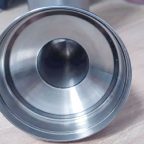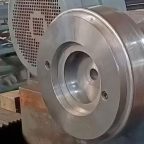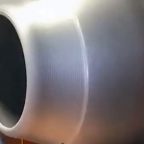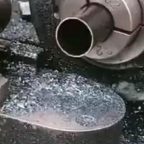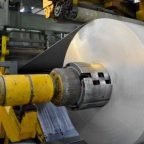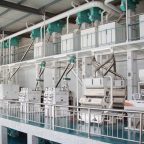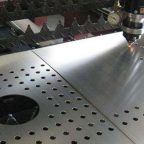
The manufacturing of hemispherical shapes is essential in various industries, including aerospace, automotive, and consumer goods. Two primary methods for producing hemispheres are metal spinning and deep drawing. Each technique has its advantages, limitations, and suitable applications, depending on the material used, desired tolerances, production volume, and the final application’s requirements. This article provides an in-depth comparison of hemispheres spinning and hemispheres deep drawing, examining the processes, materials, advantages, and limitations of each method.
Metal Spinning For Hemispheres
Metal spinning, also known simply as spinning, is a metalworking process in which a flat metal disk or tube is rotated at high speeds while being pressed against a shaped mandrel to form a symmetrical part. The process can be performed manually or with the assistance of CNC machinery, allowing for high precision and repeatability.
In the context of hemispherical shapes, the spinning process begins with a flat metal blank. As the blank rotates, a roller tool gradually forces the metal against a hemispherical mandrel. This process shapes the metal into a smooth, seamless hemisphere. Depending on the material and thickness, multiple passes may be required to achieve the final shape.
Materials Used
Metal spinning is versatile in the range of materials it can accommodate. Common materials include aluminum, steel, copper, and titanium. The process is particularly well-suited for ductile metals, which can be easily formed without cracking or breaking.
Advantages
- Flexibility in Design: Metal spinning allows for the creation of complex, symmetrical shapes with varying wall thicknesses, depending on the pressure applied during the spinning process.
- Cost-Effective for Low to Medium Production Volumes: Since the tooling for metal spinning is typically less expensive than that for deep drawing, it is more economical for low to medium production runs.
- Strength of the Finished Product: The cold-working process involved in spinning can increase the strength and hardness of the material due to work hardening.
- Surface Finish: Spun parts typically have a smooth, uniform surface finish, reducing the need for additional finishing processes.
Limitations
- Material Thickness: Spinning is generally limited to thinner materials, as thicker metals require more force to shape, which can lead to defects.
- Precision: While CNC spinning can produce parts with high precision, achieving tight tolerances, especially on complex geometries, can be challenging compared to deep drawing.
- Production Speed: The process is slower compared to deep drawing, particularly for large-scale production runs.
Deep Drawing For Hemispheres
Deep drawing is a metal forming process in which a flat metal blank is radially drawn into a forming die by a mechanical punch. The process is called “deep drawing” when the depth of the drawn part exceeds its diameter. Hemispheres produced by deep drawing require a series of operations, typically involving the blank being drawn through successive dies to gradually form the desired shape.
During the deep drawing process, the material undergoes significant plastic deformation, resulting in a part with a consistent wall thickness and high dimensional accuracy. The use of lubrication is crucial to reduce friction between the die and the workpiece, preventing tearing and ensuring a smooth finish.
Materials Used
Deep drawing is best suited for ductile metals that can withstand significant deformation without cracking. Commonly used materials include low-carbon steel, aluminum, brass, and certain stainless steels. The choice of material often depends on the required strength, weight, and corrosion resistance of the final product.
Advantages
- Precision and Consistency: Deep drawing allows for high precision and uniformity in the production of hemispherical shapes, making it ideal for parts requiring tight tolerances.
- Suitable for Thick Materials: Deep drawing can handle thicker materials more effectively than spinning, making it suitable for applications where strength and durability are critical.
- High Production Speed: Once the tooling is set up, deep drawing is a rapid process, making it highly efficient for large-scale production runs.
- Cost-Effectiveness for Large Volumes: Despite the high initial cost of tooling, deep drawing becomes cost-effective for large production volumes due to the speed and consistency of the process.
Limitations
- Tooling Costs: The dies used in deep drawing are expensive and time-consuming to produce, making the process less economical for small production runs.
- Material Limitations: While deep drawing can handle thicker materials, it is generally limited to metals that are sufficiently ductile to avoid cracking or tearing during the drawing process.
- Complexity in Design: While deep drawing excels in producing precise and consistent shapes, it is less flexible than spinning when it comes to creating parts with varying wall thicknesses or more complex geometries.
- Risk of Defects: The process is prone to defects such as wrinkling, tearing, or thinning, especially in the early stages of forming or with improperly chosen materials.
Comparative Analysis
- Design Flexibility:Metal spinning offers greater flexibility in terms of design, particularly when it comes to creating parts with varying wall thicknesses or more complex geometries. Deep drawing, while highly precise, is more limited in its ability to produce complex shapes and is typically used for parts requiring uniform wall thickness.
- Cost Considerations:For low to medium production volumes, metal spinning is generally more cost-effective due to its lower tooling costs. However, for large-scale production runs, deep drawing becomes more economical due to its higher production speed and consistency.
- Material Considerations:Both processes are suited to a wide range of materials, but deep drawing is better suited for thicker materials and those requiring significant deformation. Metal spinning, on the other hand, is ideal for thinner, more ductile metals.
- Precision and Tolerances:Deep drawing typically offers higher precision and tighter tolerances, making it the preferred choice for applications requiring high dimensional accuracy. Metal spinning, while precise, may not achieve the same level of consistency, especially for complex parts.
- Production Speed:Deep drawing is significantly faster than metal spinning, particularly for large production volumes. Metal spinning, while slower, is more adaptable to small batch production and prototyping.
Conclusion
Both hemispheres spinning and hemispheres deep drawing are valuable manufacturing processes, each with its own set of advantages and limitations. The choice between the two depends largely on the specific requirements of the application, including design complexity, production volume, material characteristics, and cost considerations. Metal spinning is favored for its design flexibility and cost-effectiveness in smaller production runs, while deep drawing is preferred for its precision, consistency, and efficiency in large-scale manufacturing. Understanding the nuances of each process is crucial for making informed decisions in the production of hemispherical components.
Maximize Tooling and CNC Metal Spinning Capabilities.
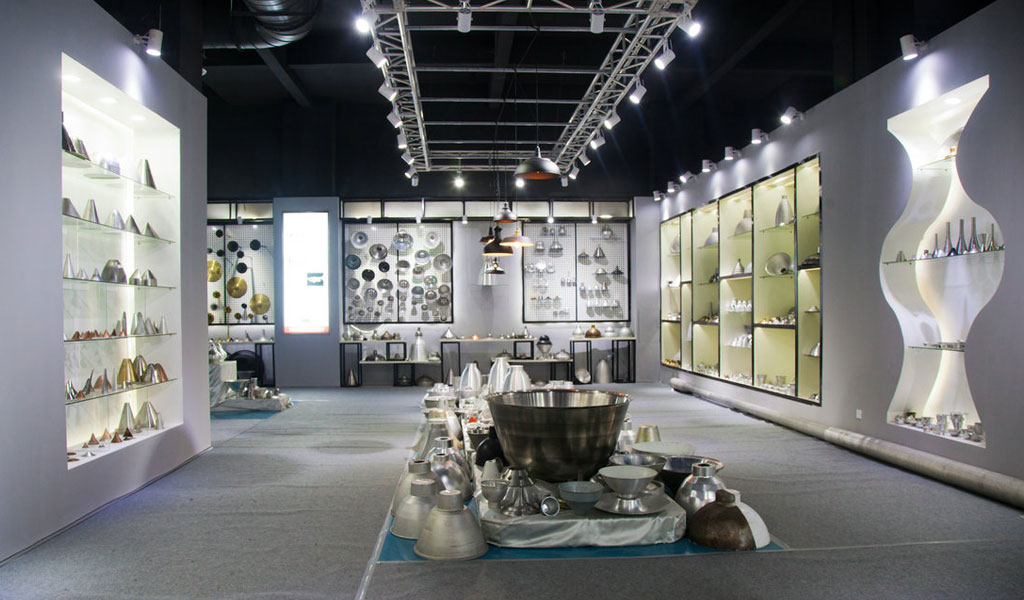
At BE-CU China Metal Spinning company, we make the most of our equipment while monitoring signs of excess wear and stress. In addition, we look into newer, modern equipment and invest in those that can support or increase our manufacturing capabilities. Our team is very mindful of our machines and tools, so we also routinely maintain them to ensure they don’t negatively impact your part’s quality and productivity.
Talk to us today about making a rapid prototype with our CNC metal spinning service. Get a direct quote by chatting with us here or request a free project review.
BE-CU China CNC Metal Spinning service include : CNC Metal Spinning,Metal Spinning Die,Laser Cutting, Tank Heads Spinning,Metal Hemispheres Spinning,Metal Cones Spinning,Metal Dish-Shaped Spinning,Metal Trumpet Spinning,Metal Venturi Spinning,Aluminum Spinning Products,Stainless Steel Spinning Products,Copper Spinning Products,Brass Spinning Products,Steel Spinning Product,Metal Spinnin LED Reflector,Metal Spinning Pressure Vessel,
